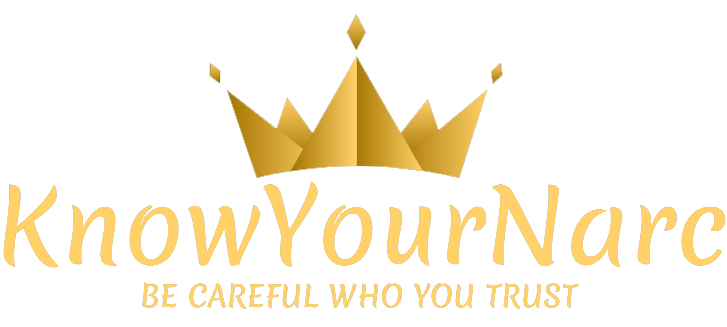There was a time when I saw people — and even myself — through a lens of rosy perfection. I believed in idealizing others, painting them with broad strokes of admiration and trust, often overlooking their flaws or complexities. But life has a way of unraveling those illusions. Slowly, that same admiration gave way to disappointment, frustration, and eventually devaluation. This is the story of my personal journey from idealization to devaluation — a winding path filled with eye-opening moments, hard lessons, and unexpected growth. If you’ve ever found yourself caught between admiration and disillusionment, I hope my experience resonates with you.
Table of Contents
- The Allure of Idealization and Its Impact on Relationships
- Recognizing the Signs of Devaluation Before It Takes Hold
- Navigating Emotional Turbulence with Mindful Awareness
- Practical Steps to Heal and Build Healthier Connections
- To Wrap It Up
The Allure of Idealization and Its Impact on Relationships
In the beginning, everything felt almost magical. My mind painted the person I admired with broad strokes of perfection—every gesture, word, and glance was imbued with meaning far beyond the mundane realities. This idealization created a powerful emotional high, a sense of connection that seemed unbreakable. However, beneath the surface, this rose-tinted view was fragile. The more I clung to that perfect image, the more distortion crept in, blurring the lines between genuine admiration and unrealistic expectations.
The impact on my relationships was profound and multifaceted. On one hand, idealization fueled excitement and deepened initial bonds. On the other, it set the stage for inevitable disappointment as the inevitable imperfections came to light. I found myself cycling through feelings of euphoria to harsh judgment, often wondering why the person I cherished seemed to unravel as their true self emerged. Reflecting on this, I realize how common this pattern is, and how important it is to:
- Embrace our loved ones’ complexity instead of clinging to a flawless image,
- Practice patience with the unfolding of reality,
- Foster deeper understanding rooted in acceptance, not just admiration,
- Recognize that true connection thrives in authenticity, not idealization.
Recognizing the Signs of Devaluation Before It Takes Hold
The transition from seeing someone as perfect to feeling disappointed can be subtle yet profound. In hindsight, I realized that certain early warning signs were there—small inconsistencies between words and actions, fleeting moments of coldness masked by charm, and an unsettling sense of walking on eggshells. These moments, if acknowledged, could serve as red flags signaling emotional devaluation before it fully takes hold. I vividly remember feeling confused by sudden shifts in attitude, the unexpected drying up of compliments, and the creeping sensation that my worth was suddenly conditional.
Recognizing these signs early made me understand that devaluation rarely happens overnight. It starts as a slow drip, eroding trust and self-esteem. Here are some subtle clues I wish I had seen sooner:
- Inconsistent communication—warmth one day, silence the next
- Dismissal of feelings that were previously acknowledged
- Excessive criticism disguised as “tough love”
- Unexplained mood swings that left me second-guessing
- A growing imbalance in effort and emotional investment
Understanding these signs early gave me a clearer perspective, allowing me to reclaim my voice before the shadows of devaluation darkened my reality.
Navigating Emotional Turbulence with Mindful Awareness
When I first encountered intense emotional swings, I felt overwhelmed by the sheer volume of feelings crashing through me like relentless waves. It was only through cultivating a practice of mindful awareness that I began to see these emotions not as enemies, but as signals from within. By pausing to observe my reactions without judgment, I discovered a new space between stimulus and response. This moment of pause allowed me to slow down the rapid shifts from idealizing people or situations to devaluing them, revealing patterns I had previously ignored.
- Recognizing triggers: Mindful attention helped me identify the specific thoughts and beliefs that fueled my emotional turbulence.
- Accepting emotions: Rather than pushing discomfort away, I learned to welcome my feelings as part of my human experience.
- Responding intentionally: This awareness empowered me to choose my reactions thoughtfully, rather than falling into automatic cycles of idealization and disappointment.
This ongoing journey has transformed my relationship with myself and others, providing a steadiness that wasn’t there before. Mindful awareness became a daily anchor—a practice that nurtures self-compassion and clearer perspective, even when emotions threaten to spin out of control.
Practical Steps to Heal and Build Healthier Connections
Rebuilding trust in yourself and others is foundational to moving beyond the extremes of idealization and devaluation. Start by acknowledging your feelings without judgment and allowing space for vulnerability. Journaling can be a powerful tool here—write down moments when you notice yourself swinging between extremes, and gently challenge those black-and-white thoughts by asking, “What might be the full spectrum of this person or situation?” Over time, this practice helped me cultivate a more balanced and compassionate perspective that embraces complexity rather than clinging to unrealistic ideals or harsh criticisms.
Another essential step is intentionally practicing clear and compassionate communication. I found that openly sharing my fears and boundaries with loved ones, even when it felt uncomfortable, created room for mutual understanding and genuine connection. Simple but transformative habits, like active listening and checking in with your feelings before reacting, foster healthier dynamics. Consider these daily actions to invite more stability into your relationships:
- Pause before responding to diffuse emotional reactivity.
- Use “I” statements to own your feelings without blaming.
- Celebrate small moments of connection and acknowledge growth.
- Seek support through therapy or support groups to build resilience.
To Wrap It Up
As I reflect on my journey from idealization to devaluation, I realize it’s been a path of growth, self-discovery, and hard-earned clarity. We all have moments where we put people on pedestals, only to later grapple with the shadows that emerge once the rose-colored glasses come off. But through that process, I’ve learned the importance of balance—seeing others as whole, imperfect humans rather than flawless icons or disappointments. If my story resonates with you, remember that these cycles don’t have to define your relationships or your sense of self. There’s freedom in embracing complexity and choosing compassion over judgment, both for others and for yourself. Thanks for reading and sharing in this piece of my story—I hope it brings a bit of insight or comfort to your own journey.

